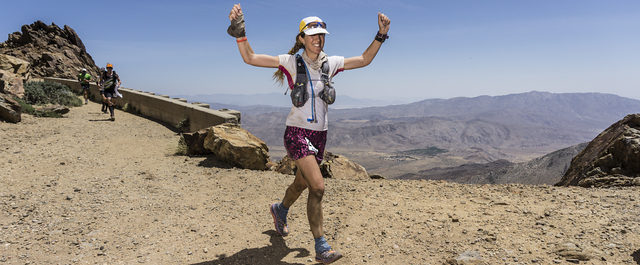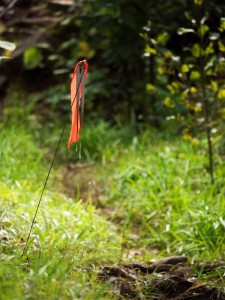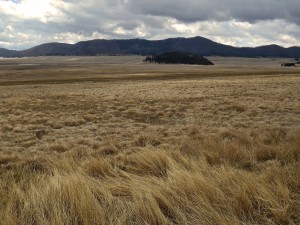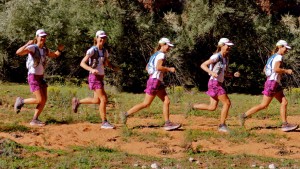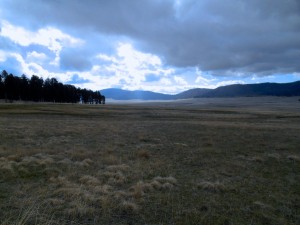
Getting lost is not something every runner gets used to. Many are content to log their miles on familiar routes on roads through their own neighborhood, where they know every crack in the pavement, every pot hole, every barking dog and every fence post that marks a their regular loop in quarter-mile increments. If you are such a runner, you probably will never experience the terrifying, exhilarating jolt of panic and thrill when you suddenly realize you have no idea where you are. Years ago, back in the day when a marathon sounded like a long, scary distance, I ran exclusively on such familiar roads – because I didn’t know any better, and also because, before everyone had GPS watches, we had to rely on mile markers for clues about how far we’d gone. Because I was familiar with roads, I ran road marathons with thousands, sometimes tens of thousands, of runners. I was a mid-packer, which means I was surrounded by others with a similar pace from start to finish. Following the course meant following a crowd. But even for the last runners in the field, the trail of crushed paper cups and gel wrappers would have been easy to spot. They’re like the bread crumbs Hansel and Gretel leave in the forest,only not as biodegradable.
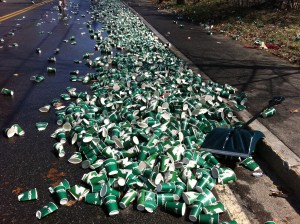
When my husband, who discovered trails long before I did, talked me into trying a trail race for the first time, I agreed because I didn’t think the difference between the two types of running would be so great. A marathon was a marathon, I thought. But I was wrong. For one thing, a trail race is an approximate distance. A road marathon is exactly 26.2 miles long. A trail marathon might be 27 or 28, give or take. Also, trail runners are much more self-sufficient, and much more environmentally minded. Any trail runner worth her S-caps will carry her own hydration and wouldn’t dream of dropping a gel wrapper on the ground, if indeed she still fuels with simple carbs instead of home-made energy bars made from avocado puree and sprouted chia seeds. In addition, most trail races have only a few dozen or maybe a couple of hundred participants. These few spread out early on. By mile ten, it is normal to find yourself alone for long stretches of time. If you’re lucky — that is, if the race is well organized, if no elk has eaten them, if no course vandals have moved them, if you remember which color they’re supposed to be, if all the stars align — tiny flags or ribbons placed along the course in sort of regular (but rarely close) intervals tell runners they’re on the right track. These little pieces of plastic are easy to miss. I should know, I have missed quite a few of them.
The first time it happened was during my first trail marathon in the Valles Caldera, a wild and scenic national preserve in northern New Mexico.
I had been running for a couple of hours, unsure of how many miles I had covered, because, of course, there were no mile markers. Orange flags led along a wide, inviting trail that ran through an idyllic, green valley dotted with pine trees. Not too far away, a herd of elk casually strolled through the tall grass. These majestic animals with giant antlers and, as I learned later, a taste for plastic flags, didn’t seem too concerned about running humans in their line of sight. Some of them glanced at me as I stared at them, utterly fascinated. I kept following the wide, clear trail while they moved along a parallel route through the meadow. A few minutes later, they turned and wandered off into the distance. I still followed the trail, still in awe. Then the spell broke. I realized I had not seen a little orange flag in a long while. Or another runner. Ahead of me, a couple of straggling elk, probably the teenage rebels of the family, broke into a trot to catch up with their relatives. They seemed to know exactly where they were going. I didn’t. Desperate for something – anything – to follow, I considered following the elk tracks, but realized they probably did not lead to the finish line. No one else was around. An eerie silence hung over the valley, except for the wind rustling through the trees. In my rising panic, I imagined stumbling through the wilderness until I died a miserable, lonely death from gradual starvation. Or maybe a bear would find me and eat me before I turned into an unappetizing single-serve portion of human jerky. The headlines in the local paper would gradually change their optimistic tone until finally admitting that all hope of finding the missing trail runner alive was gone. Then, maybe in a couple of years, another news report: “Today, a few scattered bones and a human skull with extensive gnaw marks were found in a remote wilderness area by a little girl hiking with her parents; the child is still traumatized by the experience. . . At this point, my practical instincts returned. I banished the visions of imminent doom and backtracked, eventually spotting the faint remnants of a flour arrow pointing down a faint single track. Just a little ways further, an orange flag hung from a tree. It was easily the most beautiful strip of bright plastic I had ever seen in my life. Overcome with relief, I hugged the tree like it was a long-lost close relative, then made it to the finish line without further detours. The bit of elk-spotting cost me almost twenty minutes, along with any hopes of placing. But somehow this didn’t matter. I was hooked. I loved the beauty of the trails, and the casual, relaxed atmosphere, where things like one’s finishing time seemed so much less important than the experience of being out in the mountains for a day. Still, I swore I’d pay more attention to course markings the next time out.
The next time out happened to be a trail marathon in a little Colorado town called Leadville.
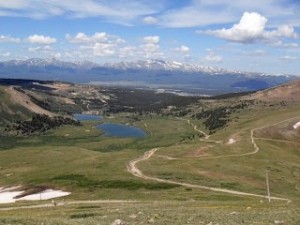
At that point, I still had no idea that races longer than 26.2 miles existed. But I wanted to run another trail marathon, and this one fit into my schedule, so to Leadville I went, blithely ignorant of its status as an ultra running mecca. At the starting line, the athletes with the lowest body fat percentage lined up near the front, just like they do in road races. But unlike the sleek, spandexed ex-triathletes with their wraparound sunglasses and tense jaw lines, this friendly-looking crowd wore buffs, beards, shaggy manes, and handheld water bottles. As usual, I felt intimidated, like an undertrained impostor among all the rippling muscles and six-pack abs. But here, everyone seemed to know everyone else, everyone smiled, and no one seemed to take the race too seriously. I relaxed, which was a mistake. The race was harder than anything else I had ever done. It started at 10 000 feet above sea level. From there, the route led up into the mountains, and kept going up, over a rocky ridge called Mosquito pass, way above treeline. There were no mosquitoes, maybe because insects, too, need oxygen. I gasped for air. On the way back down, still gasping for air, I paid close attention to the pink flags and followed a group of runners around a trail that looked somewhat familiar. This was also the first time I used a Garmin, and I noticed it said I had already run 25 miles. I was confused, but blamed it on oxygen deprivation. At the next aid station, the feeling of déja-vu intensified. A kind volunteer eventually helped me figure out that I had run a loop I was supposed to run only once a second time. My distance ended up being 30 miles instead of 26, and my finishing time was once again much slower than anticipated. I learned three valuable lessons that day. One: paying attention to the course markings is no replacement for studying the course map. Two: following other runners is not always the same thing as following the course. Three: I am capable of running longer than 26.2 miles.
This last epiphany came to me a few hours after the marathon, over a couple of post-race beers at a local bar with some of our new friends who talked about running 50 or 100 miles as though it was something normal people could do. It changed my life. It made an ultra runner out of me. I signed up for my first 50k that summer, my first 50-miler a few months later. I returned to Leadville for my first 100-mile race the next summer. Now, six years later, I look out of place when I run an occasional road marathon wearing my buff and carrying my handheld water bottle. I feel much more at home camping among other dirtbaggers at the starting line of some remote but gorgeous ultra with a crazy amount of vert. It’s a good place to be.
